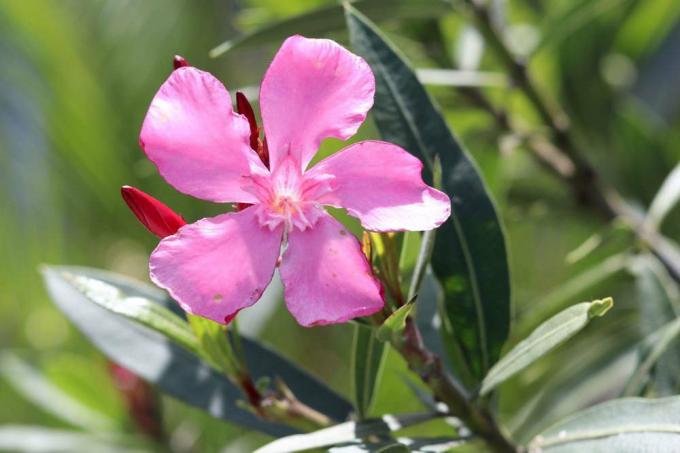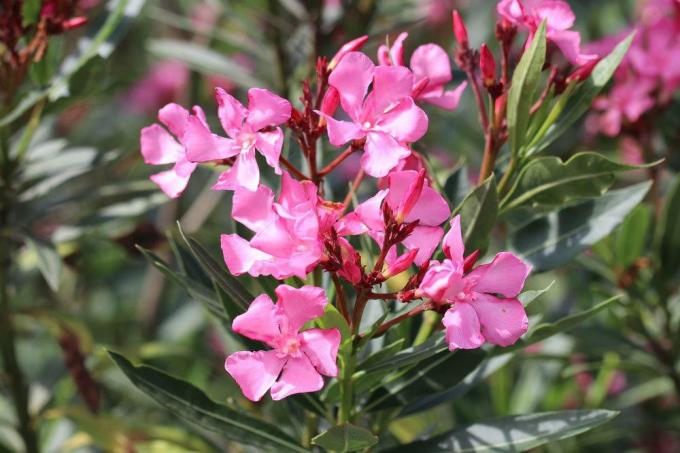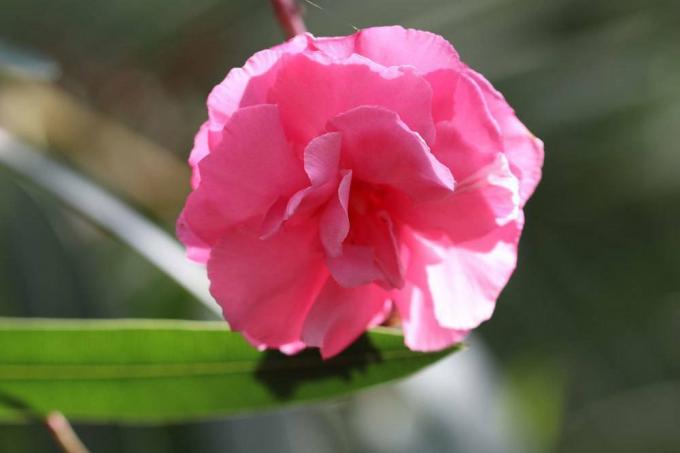
table of contents
- Multiply
- Cuttings / offshoots
- Propagating oleanders with cuttings: instructions
- Location
- Seeds
First of all, admit it oleander on the balcony or terrace you quickly feel like you want more. In order to fulfill this wish, you do not have to buy new plants; you can propagate your oleander. This takes a little patience, but success almost always comes with the propagation. The following guide will help you to successfully propagate your oleander.
Multiply
Oleander can be propagated in a number of ways. Depending on the degree of difficulty and effort, a distinction is made between propagation with:
- Cuttings or Offshoots
- Seeds
The easiest way to propagate the oleander is with cuttings. In comparison, growing young oleander plants is more difficult. You should also note that only when propagating with cuttings are the young plants completely identical in appearance and flowering to the mother plant. The advantage of propagating with seeds is that possible diseases of the mother plants are very rarely transmitted.

tip: Since both types of propagation can fail, you should always grow several young plants.
Cuttings / offshoots
Propagation with cuttings is not only the easiest way to grow new oleander plants, but also offers the possibility of obtaining several young plants at once. Basically, you can cut cuttings all year round, but the ideal time to cut is between May and August. Since the oleander is cut back during this time, many potential cuttings are incurred as waste, so to speak.
tip: One to two year old shoots as well as complete branches are suitable as cuttings.
Propagating oleanders with cuttings: instructions
So that the cut shoots can also be used as cuttings, they should be about 20 centimeters long. Once the cutting has been taken, you should examine it for diseases and pests, because only a healthy shoot is suitable as a cutting. To prepare the cutting, do the following:
- remove all leaves in the lower area
- leave only the top two pairs of leaves
- Cut the offshoots at the lower end at an angle with a sharp knife
- Then place the cutting in a container with lukewarm water
- Change the water daily to prevent rot
- After about four weeks, the first fine roots should have formed
tip: If you use a dark container or a container covered with aluminum foil, the cutting will take root more quickly.
Alternatively, you can also use the cutting in a seed tray Potting soil or poor substrate. Then pour the substrate lightly. In the next few weeks you should make sure that the substrate is evenly moist and that there is high humidity. You can create this by placing the cutting and the planter under a transparent cover. The following is suitable as a hood, for example:
- a cut off plastic bottle
- a tall mason jar
- a construction made of rods and foil
tip: It is important that there is no contact between the cutting and the plastic cover, otherwise rot can occur. You should therefore choose a larger hood.
Location
Regardless of whether it is a seed tray or a glass, the ideal location for the cutting is:
- warm (20 ° C and more)
- bright (no direct sun)
- without drafts
tip: Cuttings are best rooted in the summer months.
Once the offshoot has formed roots one to two centimeters long, it can be moved to a smaller pot with soil. So that he feels really comfortable in his new home, you should put something under the substrate Slow release fertilizer give. After inserting, carefully water the cutting. Once the smaller pot is fully rooted, the young plant can move to a larger pot.
tip: The young oleander shows the first flowers after one or two years if it comes from head cuttings. If it was pulled from a woody branch, it will take longer for the first flower to bloom.
Seeds
Propagation with seeds requires a little patience until it is crowned with success. Oleander seeds can be removed from any oleander after flowering. The seeds originate in bean-like fruits and are provided with a parachute. The seed pods are ripe for removal when they are
- are brown and dry
- already burst at the edges
Since the oleander belongs to the so-called. Light germs heard, the seeds may only be covered with an extremely thin layer of soil. They also need to be kept moist at all times during germination. The ideal location is light and warm. Therefore, it is best to dress the oleander indoors.
tip: You increase the humidity by covering the seed tray with transparent film or placing it in a small greenhouse.
If the seeds have become small plants, you can move them to smaller pots. Make sure that you do not damage the roots and plants when moving. It is best to make a planting hole in the substrate with your finger or a stick before planting. After planting, press the soil lightly and lightly water the delicate plants.
tip: Use only the strongest plants for transplanting.

When propagated by seeds, the young oleander plants bloom in the third year at the earliest. Then you can see what color the flowers are. With this method, the young plants do not necessarily have to resemble the mother plant in terms of color and appearance. This is due to the fact that pollination is carried out by insects and the new plants also contain the genetic material of the “father”.




